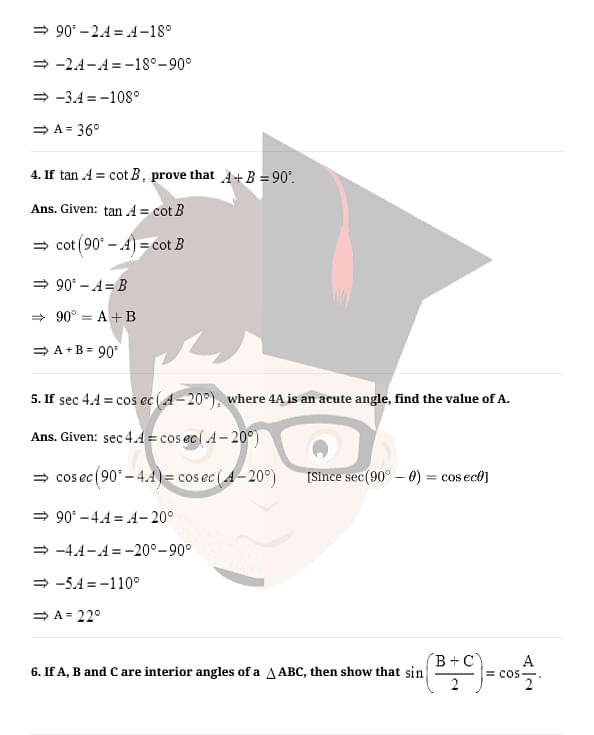Jasmine Grover Content Strategy Manager
Content Strategy Manager
NCERT Solutions for Class 10 Maths Chapter 8 Introduction to Trigonometry Exercise 8.3 is provided in this article. Class 10 Maths Chapter 8 Introduction to Trigonometry carries a weightage of 12 Marks along with chapter 9 some applications of trigonometry. Chapter 8 exercise 8.3 includes questions based on trigonometric ratios of complementary angles.
Download PDF: NCERT Solutions for Class 10 Maths Chapter 8 Introduction to Trigonometry Exercise 8.3
Check below the pdf of NCERT Solutions for Class 10 Maths Chapter 8 Exercise 8.3




Read Also: NCERT Solutions for Class 10 Maths Chapter 8 Introduction to Trigonometry
Check out NCERT solutions of other exercises of class 10 maths chapter 8 Introduction to Trigonometry:
Class 10 Chapter 8 Introduction to Trigonometry Related Links:
CBSE Class 10 Maths Study Guides:





Comments